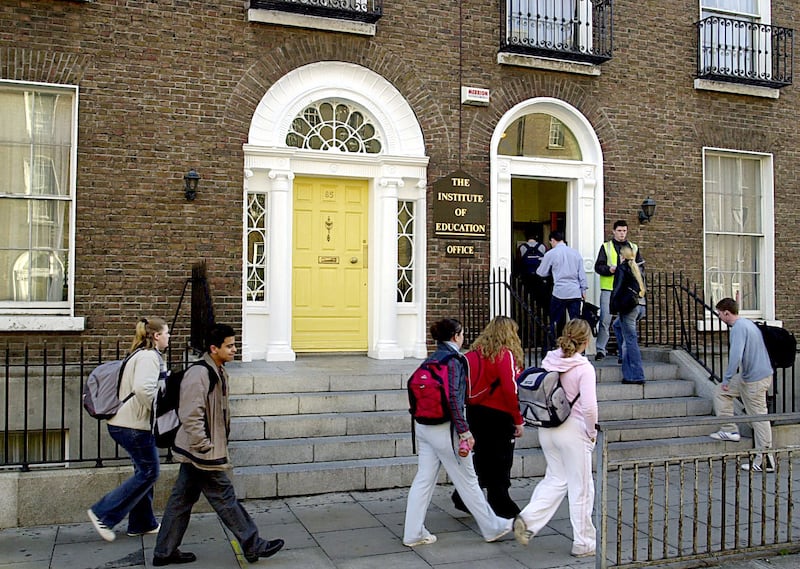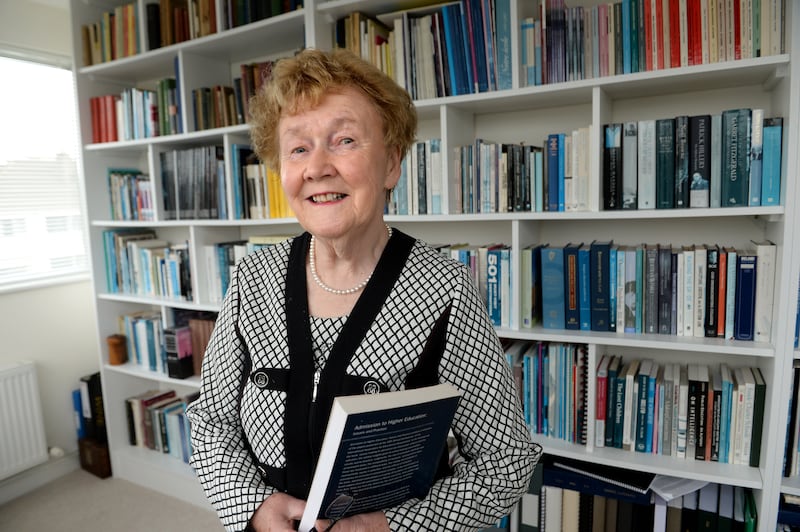Back when he was a student in 2012, John Gannon aced the aptitude test required for entry to undergraduate medicine. Of the thousands that sat the Hpat, or Health Professions Admission Test, that year, he says he scored in the top 1 per cent of candidates. These days Gannon is a specialist registrar in public health medicine, but he also does a sideline in private tuition for students preparing for the test.
His AceTheHpat.com course pledges to “help students unlock their potential and secure a place in medicine” with courses such as weekend workshops (€150) or group classes for five weeks (€225) or 10 weeks (€450).
The Hpat, a 2½-hour test that assesses qualities deemed important for medicine, such as reasoning, problem-solving and interpersonal skills, was initially devised as the kind of assessment that candidates could not study for.
When the Hpat was introduced in 2009, the Australian Council for Educational Research (Acer), which devised the test, said it did “not endorse any training college and actively discourages candidates attending them”, adding: “They are a waste of the candidates’ (or their parents’) money.”
READ MORE
Today, there is an extensive private tuition industry to service huge demand for help with the tests. Applicants can learn solutions to assessments, complete mock exams and avail of one-to-one tutoring – for a price.
Grind schools such as the Institute of Education offer 10-week preparatory programmes for €675, while MedEntry – founded by two medical doctors – says its “proven packages will help you ace the Hpat to gain entry into Ireland’s top medical schools” for up to €1,695.
This week The Irish Times reported that deans of medical schools want to significantly reduce the weighting of the Hpat for entry to study medicine amid equity concerns and evidence that many entrants benefit from being “coached” for exams.

So, can students really improve their performance in tests aimed at assessing generic skills suited to medicine rather than knowledge recall?
A review by five medical faculties three years after its introduction found 40 per cent of successful applicants each year had improved their Hpat score after resitting.
Dr Gannon says that while students can improve with practice, there is a misconception that coaching leads to dramatic score increases.
“In reality, students tend to improve most in section three (non-verbal reasoning), least in section two (interpersonal understanding) and moderately in section one (logical reasoning),” he says.
The section on non-verbal reasoning requires students to find logical patterns within figures and use these patterns to arrive at the answer.
While many students find this section the most difficult initially, discussion threads online show those who study it in detail begin to recognise the same patterns to the point where many admit to getting all these questions correct in mock exams.
Dr Gannon says this appears to have led Acer to change the weighting of scores attached to the non-verbal reasoning section in recent years. Whereas all three sections were previously worth 33 per cent each, sections one and two are now worth 40 per cent each while section three on non-verbal reasoning is worth just 20 per cent.
Ultimately, Dr Gannon says, there are aspects of the exam that cannot be learned with practice.
“Preparation can help to improve the approach to the exam and especially managing timing, but core skills like empathy and critical thinking can’t be memorised like Leaving Cert content,” Dr Gannon says.
David Ball, a senior manager with the Institute of Education, rejects suggestions that preparatory courses are somehow “gaming” the system. Instead, he says, highly-motivated students simply want to prepare for whatever assessment they are facing.
“One of the reasons we do these courses is that once they are preparing, they are managing their stress,” he says. “It gives students comfort that they are preparing for something important.”

Many parents and students, meanwhile, take exception to the idea that they are doing anything wrong by using all available means to boost their Hpat scores.
“My daughter just got 212 points in her Hpat this year and I most strongly refute the claim that she was ‘gaming’ the system in order to achieve this result, the consequence of hours and hours of hard dedicated slog and sacrifice on her part alone,” said one mother. “Could the mirror please be turned back on those whose job it is to develop an appropriate system of entry to medical school in Ireland.”
Another commented: “Of course we invested in a Hpat course! It would be pretty poor household financial management not to do so. This decision was based on the logic that it’s an exam and all exam outcomes can be improved with better preparation.”
One reason behind the introduction of the Hpat was to address the fact the most affluent students with near-perfect Leaving Cert scores were much more likely to secure places in medicine.
Not much, it seems, has changed. Latest Higher Education Authority data shows about 33 per cent of medicine students are from wealthy backgrounds, compared with 18 per cent of students overall. Only 3 per cent of medicine students are from disadvantaged backgrounds, compared with 11 per cent overall.
However, the same patterns are evident for entry to high-points courses leading to elite careers, such as in banking and finance. Equity issues are structural and not exam-specific, argues Dr Gannon.
“Rather than dilute the Hpat, we should expand scholarships, outreach and ring-fenced places for underrepresented students, to level the playing field,” he says.
Áine Hyland, professor emeritus of education at UCC, however, says any aptitude tests are not a good predictor of university performance in any discipline. International evidence shows students can improve their performance in aptitude tests by up to 20 per cent with systematic coaching, she says.
This week, she produced a letter that she first wrote to university deans of medicine back in 2004 – when the Hpat was first proposed – warning that such tests would simply lead to “a burgeoning of the grind school industry”.
“My prediction seems to have been proved accurate,” she says.

Can you pass the Hpat?
The Hpat used by Irish medical schools for entry into undergraduate medicine, consists of 114 multiple choice questions distributed across three sections. We have included one question from each of the sections:
Q1: Logical reasoning and problem-solving
Botanists studied a rainforest in Nicaragua that had been ravaged by Hurricane Joan in 1988. They found that in the following 10 years the number of tree species had increased by at least 200 per cent, and up to 300 per cent, in eight storm-affected plots. Other plots not affected by the hurricane showed little if any such increase. From this information, it can be concluded that:
A. Hurricanes play an important role in ensuring the long-term survival of tropical rainforests.
B. When the dominant trees in an area of tropical rainforest are destroyed, other species are given a chance to flourish.
C. The overall life of a tropical rainforest is increased if large areas are occasionally levelled to the ground.
D. The productivity of a tropical rainforest will be maximised if large areas are occasionally levelled to the ground.
Q2: Interpersonal understanding
In the following passage, an adolescent boy talks about living with a physical disability:
As I have been physically disabled all my life, I have managed to cope with the purely practical problems arising with a minimum of fuss. I felt no loss, because I had no feelings of “normality” to compare with. One of my physical problems is that I am short, about 127 centimetres tall. I was constantly mistaken by strangers for a little kid. It’s a real pain for a 16-year-old boy to be handed a kid’s menu every time he enters a restaurant. It is even worse when mere coherent speech is greeted with awe.
For the writer, the main problem with his disability is
A. The embarrassment of being so short.
B. Never knowing what it is to be “normal”.
C. Dealing with other people’s preconceptions.
D. Coping with the practical problems caused by his condition.
Q3: Non-verbal reasoning
Arrange the five pictures so that they form a logical sequence. Then select the middle picture of the sequence and mark the corresponding letter (A, B, C, D or E) on the answer sheet.

Answers: Q1 (B), Q2(D), Q3(E)
Source: Hpat Ireland

















